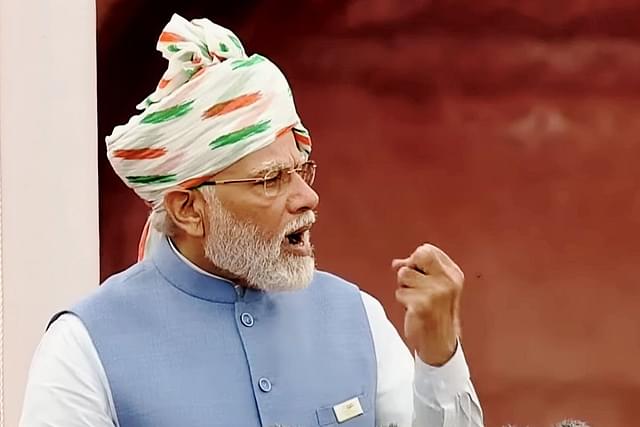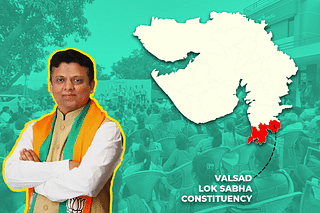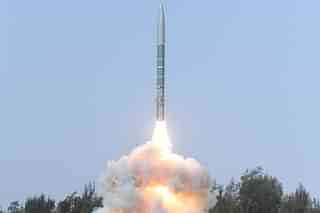Ideas
Jai Anusandhan: Why Research And Innovation Are Primary Goals For India In Amrit Kaal
Aashish Chandorkar
Aug 23, 2022, 11:40 AM | Updated Aug 24, 2022, 10:10 AM IST
Save & read from anywhere!
Bookmark stories for easy access on any device or the Swarajya app.

The modern Indian nation state entered the fourth quartile of a century of independence this month.
The coming twenty-five years, dubbed as the Amrit Kaal by Prime Minister Narendra Modi, hold much promise to propel India in an orbit of prosperity.
Highlighting this possibility in his address to the nation from the Lal Qila on 15 August, PM Modi stressed on the need for research and development and innovation to drive Indian economic dreams.
The Prime Minister stressed that the coming decade can in fact be India’s techade – a gold period of growth that can turn a distant future into the present continuous.
He remembered that Prime Minister Lal Bahadur Shastri had coined a slogan Jai Jawan, Jai Kisan, an apt phrase for the 1960s when India faced the twin challenges of wars and food insecurity.
Later at the turn of the century, Prime Minister Atal Bihari Vajpayee added Jai Vigyan to this statement of national ambition. It reflected the times when India extended its nuclear capabilities.
Prime Minister Modi has now added Jai Anusandhan to this troika. The spirit of investigation, of research and development, has to be foundational aspect of the coming decade and beyond.
From finding scalable solutions to uniquely troublesome Indian day to day problems to creating ideas that can lead the world, there is a huge continuum to tap into.
A research led economic development also requires the country to look at its problems from its own lens without the tinted glasses of imported solutions.
This is not to say that there is nothing to learn from the world, but rather to acknowledge that some problems require indigenous solutions, for the world won’t rush to solve them for us.
This power of innovation was exemplified by PM Modi through the success of the Unified Payments Interface (UPI). He mention how UPI and its implementation via apps like BHIM had made India a global leader in digital payments.
Last year, 40 per cent of all real time payments in the world were made in India.
Another domain of recent accomplishment has been the emerging 5G technology. Earlier this year, a team of researchers funded by the Department of Telecommunications created an indigenous 5G testbed.
Teams from the Indian Institutes of Technology, Bombay, Delhi, Hyderabad, Kanpur and Madras, Society for Applied Microwave Electronics Engineering and Research, Chennai and Indian Institute of Science, Bengaluru collaborated on this project.
An Indian 5G standard dubbed 5Gi has also been merged into the global 5G standard by the global standard setting body Third Generation Partnership Project or 3GPP.
The Indian standard addresses effective working of the 5G technology in the Indian operating conditions.
This independence day was also the first time in 75 years since 1947, when a Made In India artillery gun was used to conduct the 21-gun salute to the national flag.
The government is working on attracting large global manufacturers to India to revitalise the manufacturing sector. The Production Linked Incentives have already been successful in several sectors and more is being envisioned in key sectors like semiconductors.
Prime Minister Modi spoke about the 4-lakh common service centres operating in rural India, where local youngsters are using technology to deliver governance services.
These centres promote small entrepreneurship and rapid digitalisation at the village level, including pushing coverage of emerging ideas like e-commerce.
These are of course very specific steps, but these examples demonstrate that fast-tracking scientific advancements that address the problems that we need to solve is critical. These problems aren’t necessarily commercially attractive for others to build for.
This social and economic transformation led by research and development, science and technology and embracing manufacturing and services alike necessitates greater public – private coordination and the ability to work towards common goals.
The academia, government and the industry have to all come together to ensure that India truly emerges as the technology hub of the world.
This alignment has already started to show result in pockets. Recently, Professor Abhay Karandikar, Director, IIT Kanpur, shared 75 ideas incubated at the premier institute, which have led to meaningful new product development.
These examples all came from just one institute of national prominence – similar work is happening around the country.
Assets like India’s evolving public digital infrastructure and the proliferation of global capability centres show ideas like these have evolved through direct public – private partnerships, government sponsorship, enabling process reforms or a combination of these factors.
A growing country also requires bigger ambitions and a bigger canvas to paint on. The space missions run by the Indian Space Research Organization have already carved a global niche for cost-effective innovation.
From Chandrayaan to the Gaganyaan, scientists are working to explore several dimensions of the outer space. On the other hand, India is also preparing a Samudrayaan as part its deep ocean mission to explore underwater resources and possibilities to further scientific interests.
From the depths of the oceans to the heights of the space and a lot more in between – a bunch of threads have spawned towards reimagining India’s global role and position.
Several years of new possibilities and technology-powered changes lie ahead of us. If India has to be a developed country in 2047, Jai Anusandhan will have to be the defining pièce de résistance.
Also Read: India@75: Seven Non-Economic Reforms We Must Push For In Amrit Kaal
Save & read from anywhere!
Bookmark stories for easy access on any device or the Swarajya app.
Aashish Chandorkar is Counsellor at the Permanent Mission of India to the World Trade Organization in Geneva. He took up this role in September 2021. He writes on public policy in his personal capacity.
Support Swarajya's 50 Ground Reports Project & Sponsor A Story
Every general election Swarajya does a 50 ground reports project.
Aimed only at serious readers and those who appreciate the nuances of political undercurrents, the project provides a sense of India's electoral landscape. As you know, these reports are produced after considerable investment of travel, time and effort on the ground.
This time too we've kicked off the project in style and have covered over 30 constituencies already. If you're someone who appreciates such work and have enjoyed our coverage please consider sponsoring a ground report for just Rs 2999 to Rs 19,999 - it goes a long way in helping us produce more quality reportage.
You can also back this project by becoming a subscriber for as little as Rs 999 - so do click on this links and choose a plan that suits you and back us.
Click below to contribute.





